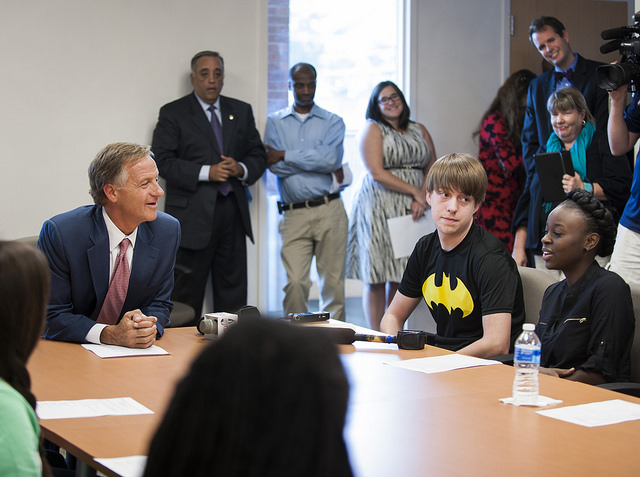
The state is now reporting how many students are taking advantage of Tennessee Promise, its free community college program: 15,830. That comes out to about a quarter of all high school seniors who were eligible to apply for the program last fall.
It’s a number the state is certainly proud of, says Tennessee Promise executive director Mike Krause, but that number doesn’t say much yet about the success of the program.
“Our measure of success is not just based on how many enroll,” he says. “A really key part is going to be how many complete [college], how many do we retain.”
The state will look at retention numbers next fall, in order to see how many Tennessee Promise students stuck with college for a second year.
Other states will be checking out retention data too, says Vanderbilt University professor Angela Boatman. She studies higher education policy, and many of her peers elsewhere are observing this program closely.
“I have been to so many places where the focus of the conversation has been around, specifically, Tennessee Promise,” she says.
But there is already at least one indicator that shows potential, she says: The number of Tennessee high schoolers who applied for financial aid to go to college has gone up. In fact, one education blog calculated that Tennessee led the nation this spring in financial aid form completion rate.
Krause points to another promising number: full-time enrollment at community colleges. Although overall enrollment is stagnant, 6 percent more of the student body is attending full-time this fall, according to preliminary head counts. That number is even higher in the freshman class, Krause says. Data in previous years has shown that full-time students are more likely to graduate.


